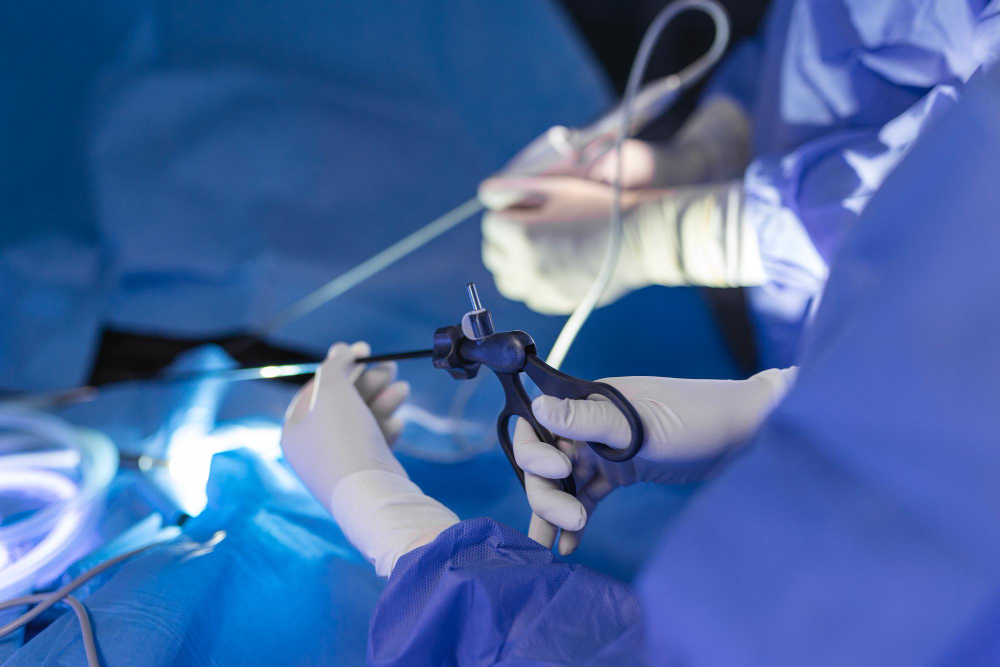When it comes to paediatric surgery, both surgeons and parents want to ensure less pain, faster recovery, and reduced scarring. This is where paediatric laparoscopic surgery, aka keyhole surgery, comes in. It is a method of carrying out an operation without having to make a large incision. It is a versatile procedure that can be performed for different types of operations. We offer high-tech paediatric laparoscopic surgery in Dubai that reduces the length of time your child needs to stay in the hospital and leaves little scarring.
Book your appointment online
Schedule your visit online without any hassle by filling the form. Simply put in your details and our representative will get back to you in 24 hours.
Benefits of Paediatric Laparoscopic Surgery
- Faster Recovery: Children tend to recover more quickly after keyhole surgery.
- Minimal Scarring: There is little scarring after keyhole surgery, which becomes more important as your child grows older and becomes more self-conscious.
- No Riks of Adhesions: One side effect of ‘open’ surgery – minimised with keyhole surgery – is ‘adhesions’. This is where internal organs stick together and form bands of scar tissue, which can be painful and cause obstruction.

Conditions Treated with Paediatric Laparoscopic Surgery
- Hernias: Laparoscopic surgery allows for a minimally invasive repair of inguinal or umbilical hernias, reducing recovery time and minimising scarring.
- Undescended Testicles: Laparoscopy helps locate and reposition undescended testicles into the scrotum with precision, often with less postoperative pain and quicker recovery.
- Gastroesophageal Reflux Disease (GERD): Laparoscopic fundoplication strengthens the valve between the stomach and oesophagus, reducing acid reflux symptoms effectively in children.
- Choledochal Cysts: These cysts can be removed laparoscopically, allowing for better visualisation of the biliary tract and faster postoperative recovery.
- Anorectal Malformations: Laparoscopic-assisted anorectoplasty enables accurate reconstruction of the anorectal canal while preserving surrounding structures and improving outcomes.
- Appendicitis: Laparoscopic appendectomy is a common, minimally invasive method to remove an inflamed appendix, leading to faster healing and less postoperative discomfort.
What To Expect Before The Procedure
For many operations, you and your child will need to come to a preadmission appointment shortly before the operation is scheduled. The purpose of this is to check that your child is well enough for the operation. It is also an opportunity to meet the surgeon again and ask any questions you might have.
Your child’s surgeon will explain the operation in detail, discuss any worries you may have and ask you to give permission for the operation by signing a consent form.
Your child should not have anything to eat or drink beforehand for the amount of time specified in the letter. It is important to follow these instructions – otherwise your child’s operation may need to be delayed or even cancelled.
An anaesthetist will visit you to explain your child’s anaesthetic in more detail. If your child has any medical problems, like allergies, please tell the doctors.
Your child may need to have some special preparation for the operation. This may include an enema to empty your child’s bowel, so that this does not block the surgeon’s view of the other internal organs. This is particularly used for children who have special needs.
What Does The Operation Involve?
Your child will be given a general anaesthetic and will be asleep during the operation. Once your child is asleep, the surgeon inserts a small metal tube called a cannula into your child’s tummy button. A telescope, with a miniature video camera mounted on it, is inserted into this tube to project a very high-quality video image onto a television screen. The abdomen is then inflated with carbon dioxide to create space in which the surgeon can operate.
The operation is performed by inserting specialised instruments which are passed through small hollow tubes which are inserted through separate very small incisions. There may be two or more small incisions required to perform the operation. Once the operation is over, the surgeon will stitch up the inside of the holes and your child will be taken to the recovery room to wake up from the anaesthetic.
Book your appointment online
Schedule your visit online without any hassle by filling the form. Simply put in your details and our representative will get back to you in 24 hours.
How Long Does Laparoscopic Surgery For Children Take?
How long the surgery takes varies depending on the complexity and area of treatment. Most operations last between 30 minutes and four hours. Our paediatric laparoscopic surgeon in Dubai will give you an estimate of how long the operation will take when they explain it to you.
Why Consult Dr. Bhushanrao Jadhav?
Dr. Bhushanrao Jadhav is a reputed and trusted paediatric surgeon in Dubai, offering compassionate laparoscopic surgery for paediatric patients. He has over two decades’ worth of experience in dealing with paediatric urology conditions and has worked in some of the most renowned medical institutions across the world.
FAQs
1. What types of procedures can be done with paediatric laparoscopic surgery?
Paediatric laparoscopic surgery can be used for a number of procedures, including appendectomy, cholecystectomy, and hernia repair. It is a highly versatile procedure as it has minimal recovery time and less risk of complications.
2. What is the success rate of paediatric laparoscopic surgery?
The success rate of paediatric laparoscopic surgery varies depending on the type of procedure performed. However, its typical success rate is above 90%.
3. What is the cost of Laparoscopy Surgery for children?
The cost of paediatric laparoscopic surgery in Dubai can vary depending on a number of factors, such as the procedure and complexity of the condition. Get in touch with us to get a cost estimation for your procedure.
4. What should I avoid after paediatric laparoscopy surgery?
The patient should avoid running, jumping, or rough play for a few weeks to help the incisions heal properly. Also, keep the incision area clean and dry, and avoid baths or swimming until the doctor says it’s safe.


